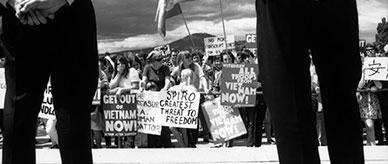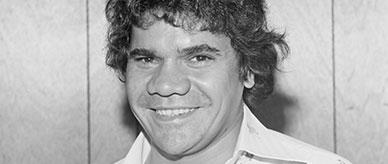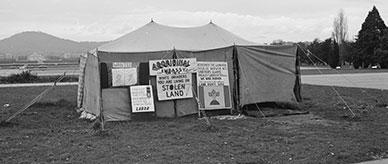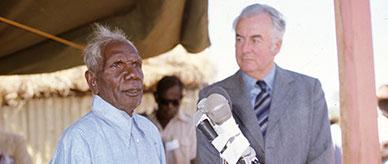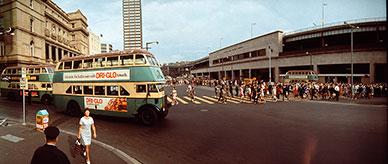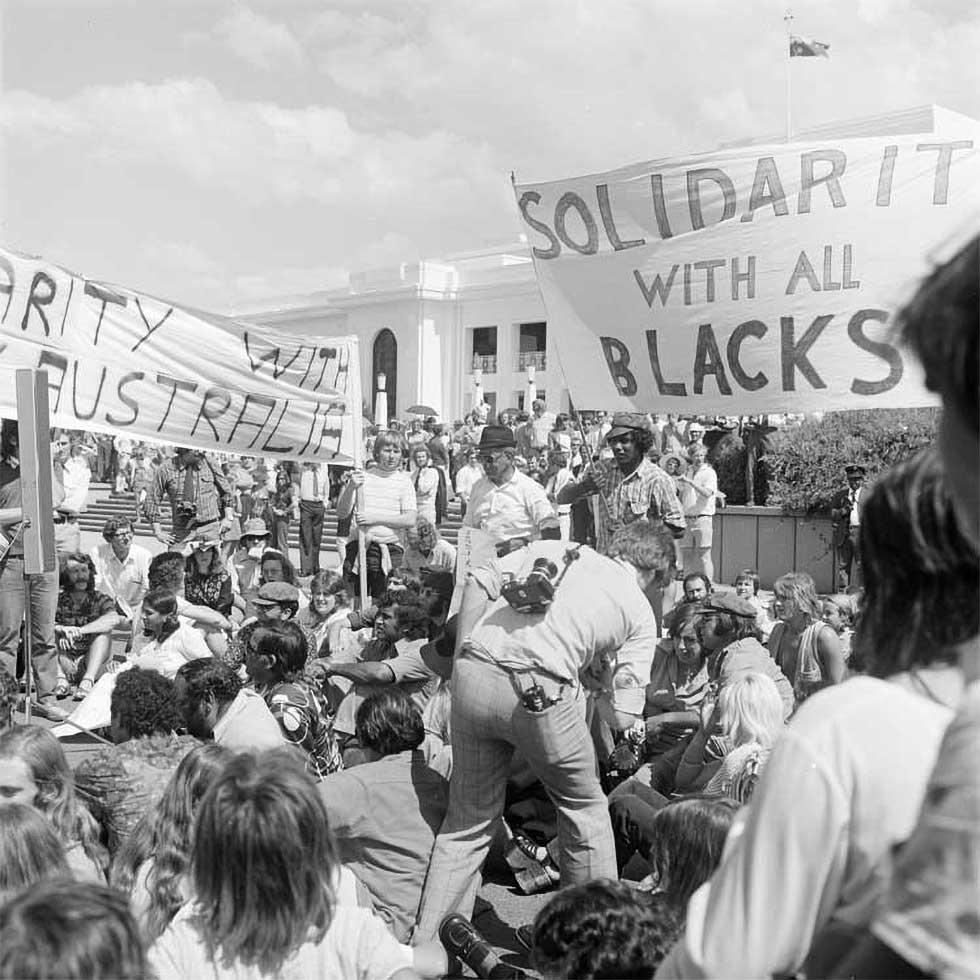


About this record
This is a black-and-white photograph taken in 1974 at the Aboriginal Tent Embassy outside Parliament House (now called ‘Old’ Parliament House) in Canberra. It shows a demonstration by Aboriginal activists, and their non-Indigenous supporters, in support of Aboriginal rights.
In the 1970s, advocacy and activism by First Australians increasingly focused on issues such as land rights, sovereignty and self-determination. It also included some of the direct protest tactics and symbolism used by other liberation movements in this period (for example, the image shows a banner reading 'Solidarity with all Blacks', which links Aboriginal activism with black liberation struggles in the USA and parts of Africa).
The Aboriginal Tent Embassy had been set up in 1972 to protest the McMahon government's refusal to grant land rights. It faced the front doors of Parliament House (now referred to as ‘Old Parliament House’) and was a rallying point for First Australians to directly petition the federal government. According to a newspaper report, 400 people attended the protest seen in this photo, including First Australians, students and members of the Department of Aboriginal Affairs.
The mixture of people shown as participants in the demonstration shows that, in this period, the Aboriginal rights movement had support within the broader community. In particular, support came from environmental activists, students, trade unions and other groups on the ‘left' side of politics. There was a growing awareness of the living conditions experienced by many First Australians, which led many Australians to support calls for land rights and for an end to racial discrimination.
Acknowledgments
Learning resource text © Education Services Australia Limited and the National Archives of Australia 2010.
Related themes
Need help with your research?
Learn how to interpret primary sources, use our collection and more.

